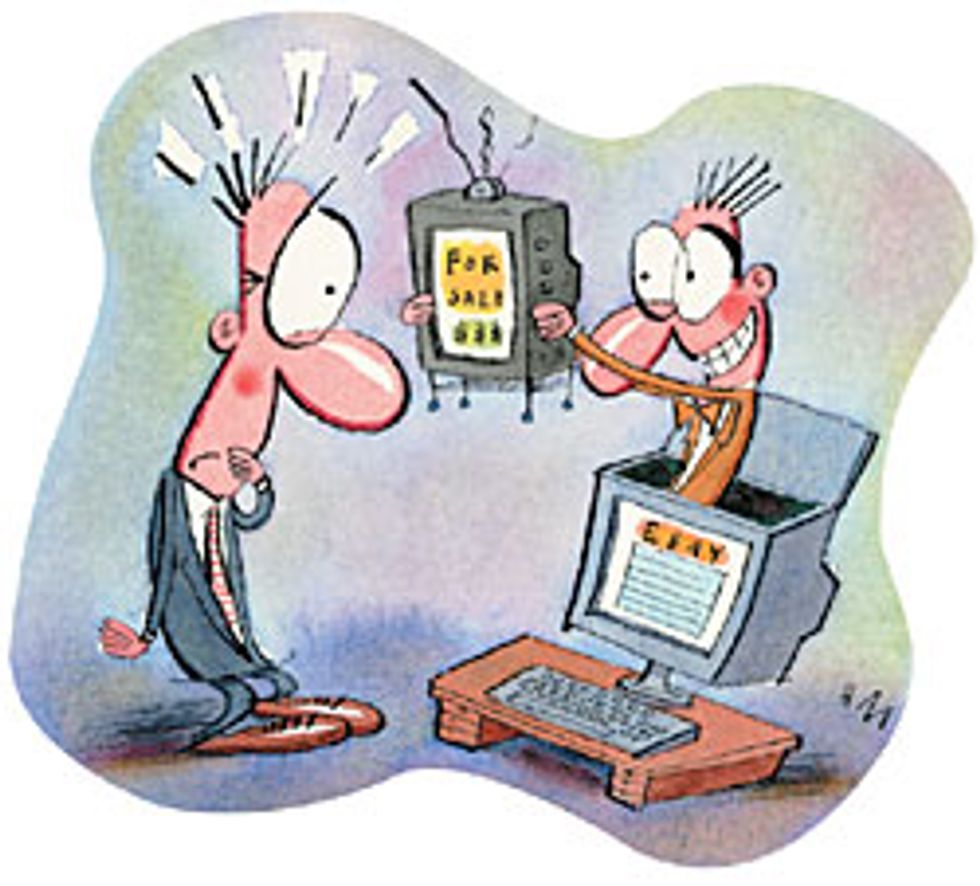There are some great bargains on eBay. As well there ought to be--after all, there's also great risk.
When you're buying at a virtual yard sale where you can't see the merchandise or from a distant retailer you've never heard of, there's a fear that the goods won't be shipped or that even if they are, that they'll be defective in some way. If only you could get the bargain without the worry!
Perhaps you can. A company called buySafe Inc. in Alexandria, Va., has come up with a way to use an ancient financial instrument, known as a surety bond, to remove the uncertainty from eBay transactions.
A surety bond is a guarantee issued by a third party, usually an insurance company, that a particular vetted individual will live up to the terms of a contract. They've been used in international trade since the Phoenicians plied the Mediterranean. And Lloyd's of London became famous in the 18th century as a place where investors could be paid to vouch for the safe arrival of goods. Perhaps because the underwriters gathered at Mr. Lloyd's coffeehouse had faith in the skill of a ship's captain or because a particular ship had always been successful before, they were ready to reimburse a buyer if a deal didn't come off properly.
The basic idea still works. While ocean storms and fickle trade winds aren't a problem on the Internet, there remains the danger that the goods you buy won't come safely to harbor. "Buyers perceive risk on eBay," says Jeffrey E. Grass, president and CEO of buySafe. "They often have very little information about the seller, sometimes not even a name, and they're about to buy a $5000 plasma TV."
Of course, if buyers are wary that buySafe might be a fly-by-night operation too, their perception of risk won't diminish. But buySafe's bonds are actually underwritten by the Hartford Financial Services Group Inc., a Connecticut-based insurance company with US $20 billion in annual sales and $200 billion in assets.
BuySafe issues Hartford's surety bonds at no cost to the purchaser; the seller is charged 1 percent on completed sales only. BuySafe minimizes its own risk by thoroughly investigating the sellers it insures. Besides looking at eBay's system of feedback ratings, where successful bidders evaluate the reliability of sellers, buySafe performs credit and identity checks.
Buysafe's target market is the growing number of small businesses for which eBay is an increasingly important selling channel. "We're looking for the companies with at least $1000 per month in eBay sales," Grass says. "That's where the biggest activity is--80 percent of trades are by professional sellers, not moms cleaning out the attic."
BuySafe started testing with a handful of vendors in November 2003. Since April, all sellers have been able to apply to qualify for the bonds. Currently, it's the only seller of surety bonds for eBay transactions. More information can be found at https://www.buysafe.com.
